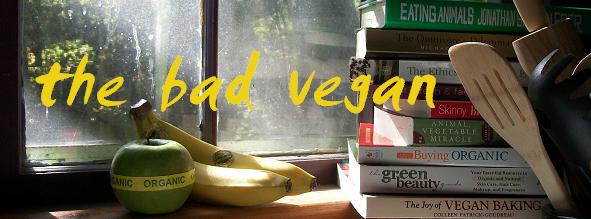 Although we have spent Christmases together before, this year we celebrated our first married Christmas, which felt like the perfect opportunity to create a Christmas dinner tradition of our own. I really wanted to put a vegan twist on traditional foods our families serve during the holidays, but since my husband is Greek and I’m Polish we kept getting stuck on how to make a cohesive menu. Ultimately, we decided that we would make a Polish dish this year and a Greek dish next Christmas. For our Vegan-Polish-Christmas dinner, we made the following recipe of pierogies with 3 different fillings, all traditional, yet vegan. We served these yummy, doughy childhood memory inducing pockets of goodness with roasted carrots, turnips, and brussel sprouts seasoned with fresh thyme and rosemary. My Grandma Goginski would be proud.
Although we have spent Christmases together before, this year we celebrated our first married Christmas, which felt like the perfect opportunity to create a Christmas dinner tradition of our own. I really wanted to put a vegan twist on traditional foods our families serve during the holidays, but since my husband is Greek and I’m Polish we kept getting stuck on how to make a cohesive menu. Ultimately, we decided that we would make a Polish dish this year and a Greek dish next Christmas. For our Vegan-Polish-Christmas dinner, we made the following recipe of pierogies with 3 different fillings, all traditional, yet vegan. We served these yummy, doughy childhood memory inducing pockets of goodness with roasted carrots, turnips, and brussel sprouts seasoned with fresh thyme and rosemary. My Grandma Goginski would be proud. Pierogies 3 Ways
Dough:
2 cups All Purpose Flour
1 ½ tsp Egg Replacer Powder
½ cup Water
2-3 Tbsp Vegan Sour Cream
Plain Unsweetened Soymilk
 Combine all ingredients except soymilk.
Combine all ingredients except soymilk. While kneading dough, add soymilk by the teaspoon until you can easily form a ball.
Split dough in half and roll out each half as thin as you can.
Using a 3” round cookie cutter or a glass, cut dough into circles.
Potato Onion Filling:
2 Red Potatoes, peeled and quartered
1/3 Onion, chopped
Fresh Thyme
Vegan Sour Cream
dash Salt
dash Pepper
Earth Balance non-dairy butter
 Boil potatoes until just soft enough to easily pierce with a fork.
Boil potatoes until just soft enough to easily pierce with a fork.Use a slotted spoon to scoop out potatoes, leaving the boiling water in the pot.
Transfer potatoes into a dry sauté pan.
Sauté over med-high heat until excess moisture cooks out.
In a large bowl, mash potatoes with a fork.
Melt a small spoonful of butter in the sauté pan, and cook onions until they begin to brown.
Mix onions into potatoes.
Add a few spoonfuls of vegan sour cream until potato mixture is smooth.
Season with fresh thyme, salt, and pepper to taste.
Cabbage Filling:
1/3 head Cabbage
1/3 Onion, chopped
1/3 Vegetable Bouillon cube
dash Salt
dash Pepper
Earth Balance non-dairy butter
Carefully place the cabbage into the boiling water you saved from the potatoes.
Boil for 10 minutes.
Carefully removed the cabbage, leaving the boiling water in the pot.
Run cabbage under cold water and drain all excess moisture.
Chop cabbage into very thin strips.
Melt a spoonful of butter in the sauté pan and add shredded cabbage.
Once the cabbage begins to cook down, crush your bouillon cube into a powder and sprinkle into the pan.
Add onions and cook until they begin to brown.
Season with salt and pepper to taste.
Soysage Filling:
Your favorite vegan sausage, crumbled
1/3 onion, chopped
Saute onion and soysage crumbles until onion is translucent and soysage is heated through.

Putting it all Together:
Place a spoonful of your filling of choice in the center of each dough circle.
Fold the circle in half and pinch the edges of the pocket shut so that each pierogi is in the shape of a half moon.
 Carefully drop the pierogies into the boiling water in small batches so you don’t overcrowd the pot.
Carefully drop the pierogies into the boiling water in small batches so you don’t overcrowd the pot.Boil for 8 minutes.
Use a slotted spoon to scoop out the pierogies.
Melt a spoonful of butter in the sauté pan and sauté the boiled pierogies, turning once, until lightly browned on each side.
Serve with vegan sour cream.
Depending on how thin you can roll your dough and how much filling you make, this recipe can make anywhere from 25-50 pierogies.
For dessert, we baked these delectable Heart Shaped Apple Galettes from Veganomicon. Bon Apetit!

































